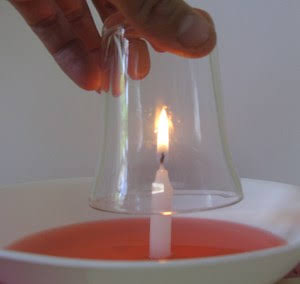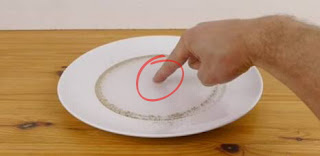levitating water

Become a water bender! Materials: 1. Baking pan, dinner plate 2. Water 3. Tea light candle 4. Matches 5. Empty glass jar that fits over the candle. Step 1: Fill a baking pan (or dinner plate) with about ½ inch of water. Place a tea light candle in the water. Step 2: Light the candle. Be careful to do this on a fireproof surface. Also, blow out the match and dip it in the water to completely cool it off. Step 3: After the candle has been burning for about a minute, invert a glass jar and place it over the candle. Watch what happens. The Science Behind It: When the candle is burning, the hot gas above it expands. As you place the jar over the top of the candle, the oxygen in the jar will allow the candle to burn for a few seconds. After the candle goes out, the gas in the jar will rapidly cool down. As the gas cools down, the volume of gas goes down and the water rises. If the candle is floating, it will levitate with the wate...

